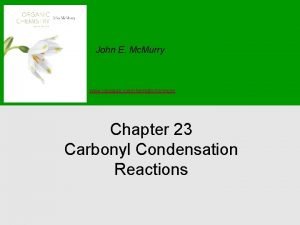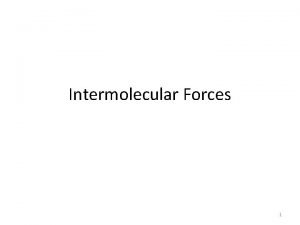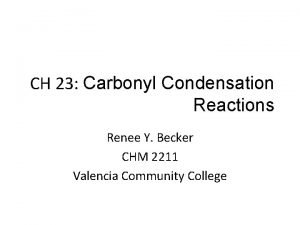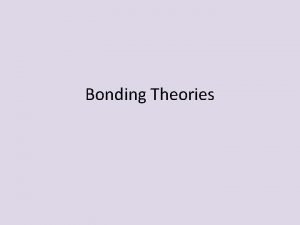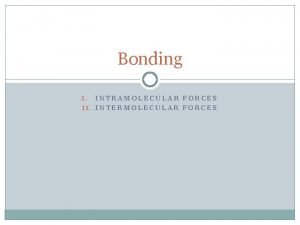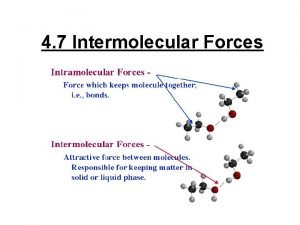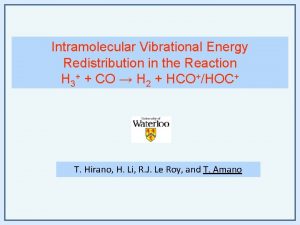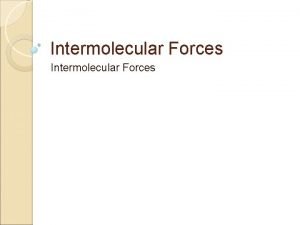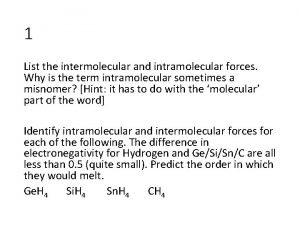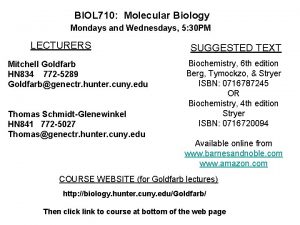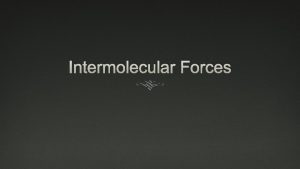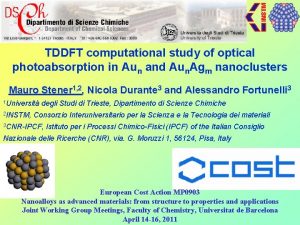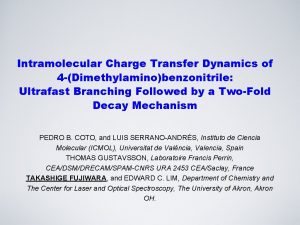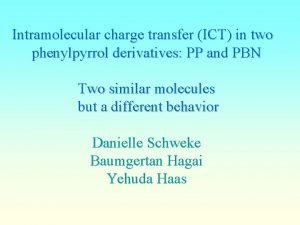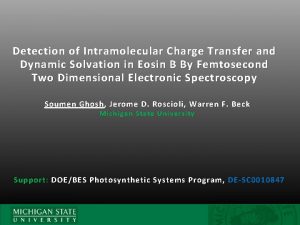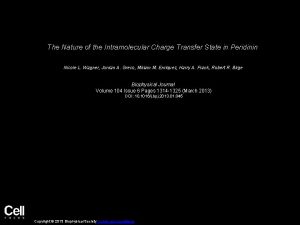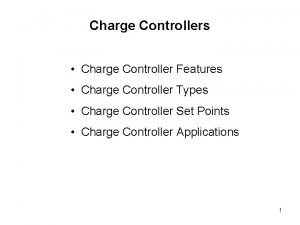A Computational TDDFT Study on Intramolecular Charge Transfer













- Slides: 13

A Computational TDDFT Study on Intramolecular Charge Transfer in Di-tert-butylaminobenzonitriles and 2, 4, 6 -Tricyanoanilines Takashige Fujiwara Department of Chemistry and Biochemistry The Ohio State University Marek Z. Zgierski National Research Council of Canada 69 th ISMS FC 10 Urbana-Champaign, IL E-mail: fujiwara@physics. osu. edu

Introduction and Motivation Unusual photophyical behaviors leading to intramolecular charge transfer (ICT) 3 - or 4 -(Di-tert-butylamino)benzonitrile (DTBABN) 2, 4, 6 -Tricyano-N, N-dimethylaniline (TCDMA) 2, 4, 6 -Tricyanoaniline (TCA) • Efficient ICT formation in either polar/non-polar solvent. • No indications for ICT formation in polar solvent. • Computational investigations on the low-lying excited states (including the πσ*-state) leading to the ICT formations. • Excited-state geometries and transition energies in the low-lying excited states: • TDDFT on Gaussian 09 and Turbomole (VMN 5) • CC 2 -RI on Turbomole • Solvation effect is not considered. • Mechanism of photo-induced ICT formation, where πσ*-state plays a crucial role.

Steady-State Absorption and Fluorescence Spectra p-DTBABN • m-DTBABN S. I. Druzhinin, S. Reddy Dubbaka, P. Knochel, S. A. Kovalenko, P. Mayer, T. Senyushkina, and K. A. Zachariasse, J. Phys. Chem. A, 112, 2749(2008).

Optimized Structures of p-DTBABN TICT ππ* πσ* 124. 6˚ �� E = +0. 00 e. V 13. 8 D �� E = – 0. 37 e. V 19. 7 D TD/BP 86/cc-p. VDZ level of theory �� E = – 0. 78 e. V 15. 7 D

TDDFT Calculations for DTBABN Isomers Adiabatic Energies and Dipole Moments in the Low-lying Excited States in DTBABN Isomers. State a p-DTBABN m-DTBABN ΔEa |μ|b ππ* 3. 53 13. 1 3. 24 12. 8 πσ* 3. 02 19. 7 3. 13 18. 3 ICT 2. 95 15. 7 2. 89 15. 8 Adiabatic energy (in e. V) relative to the ground state. b Modulus of the dipole moment (in Debye). TD/BP 86/cc-p. VDZ level

Adiabatic Potential Energy Surfaces TD/BP 86/cc-p. VDZ adiabatic potentials • Single-Point TDDFT energy from the ππ* optimized structure • Single point TDDFT energy from the πσ* structure • p-DTBABN show that the lowest πσ* state is naturally switched to the ICT state: • • Straightening the Cph-C≡N angle, • Shortening of the C-N bond length. A slight torsion of the di-tert-butylamino group to its nearly perpendicular,

Adiabatic Potential Energy Surfaces Among dialkylaminobenzonitriles, the only meta-substituted compound that shows the ICT formation in a polar environment. TD/BP 86/cc-p. VDZ adiabatic potentials

The ICT Mechanisms in DTBABNs Two States Model • • Ultrafast ICT formation observed: The time scale of 60– 70 fs of the ICT formation at room temp. S. I. Druzhinin, … K. A. Zachariasse, J. Phys. Chem. A, 112, 2749(2008). The πσ*-State Mediated ICT Model • • M. Z. Zgierski, E. C. Lim, and T. Fujiwara, Comp. Theor. Chem. , 1036, 1 (2014). Render larger kinetic rate constants between the states involved.

Steady-State Absorption and Fluorescence Spectra TCA TCDMA ? • Single exponential decay: 4. 2 ns • • Double exponential decays: 1. 79 ns and ~ 2 ps decay/grow-in at higher/lower energy (423/541 nm) K. A. Zachariasse, S. I. Druzhinin, V. A. Galievsky, S. Kovalenko, T. A. Senyushkina, P. Mayer, M. Noltemeyer, M. Boggio-Pasqua, and M. A. Robb, J. Phys. Chem. A, 113, 2693 (2009).

TDDFT Optimized Structures of TCDMA ππ* πσ* 28. 7˚ TICT 37. 8˚ 124. 0˚ E = +0. 00 e. V TCDMA �� TCA �� E = +0. 00 e. V �� E = +0. 80 e. V �� E = – 0. 03 e. V �� E = +1. 30 e. V �� E = +0. 51 e. V TD/B 3 LYP/cc-p. VDZ level of theory

Excited-State Absorption Spectra for TCA / TCDMA TCA — Kinetically interconnected excited-states are present — No further spectral evolution over 10 ps • K. A. Zachariasse, … and M. A. Robb, J. Phys. Chem. A, 113, 2693 (2009).

CC 2/cc-p. VDZ Structures and Dynamics for TCDMA 29. 3˚ 10. 2 D 9. 0 D 2. 7 D ICT-AQ LE (ππ*) ICT-Q ~ 2 ps �� E = +0. 002 e. V �� E = – 0. 12 e. V 1. 79 ns Rapidly interconnecting S 1 conformers • Consistent with CASSCF computations by Zachariasse et al. • ICT-AQ is not a stable conformer, having two imaginary vibrations. • M. Z. Zgierski et al. , Comp. Theor. Chem. , 1036, 1 (2014).

Summary and Acknowledgment TDDFT (or CC 2) computations were performed on the low-lying excited states of di-tert-butylaminobenzonitriles and tricyanoanilines that exhibit unusual photophysical behaviors leading to the ICT formation. Ultrafast ICT formation in p-DTBABN and m-DTBABN is due to the sequential mechanism of ππ*→ πσ*→ ICT, involving conical intersections among the closely-lying excited-states. For TCDMA, the presence of a TICT state that lies below the initially photoexcited ππ* state, responsible for the ultrafast dynamics observed in the excited-state absorption in acetonitrile. In both cases for TCDMA and TCA, the πσ* state locates significantly higher in energy than the ππ* state, thus precluding the πσ*→ ICT formation. Collaborator Dr. Edward C. Lim, The University of Akron, U. S. A Support Ohio Supercomputer Center
 Intramolecular claisen condensation
Intramolecular claisen condensation Intermolecular forces from strongest to weakest
Intermolecular forces from strongest to weakest Inter vs intramolecular
Inter vs intramolecular Intermolecular and intramolecular forces
Intermolecular and intramolecular forces Similarities of intermolecular and intramolecular forces
Similarities of intermolecular and intramolecular forces Intermolecular force of attraction
Intermolecular force of attraction Intramolecular claisen reaction
Intramolecular claisen reaction Types of van der waals forces
Types of van der waals forces Intramolecular forces
Intramolecular forces Intermolecular force
Intermolecular force Intramolecular vibrational energy redistribution
Intramolecular vibrational energy redistribution Intramolecular vs intermolecular forces
Intramolecular vs intermolecular forces Intramolecular forces list
Intramolecular forces list Intramolecular interactions
Intramolecular interactions
